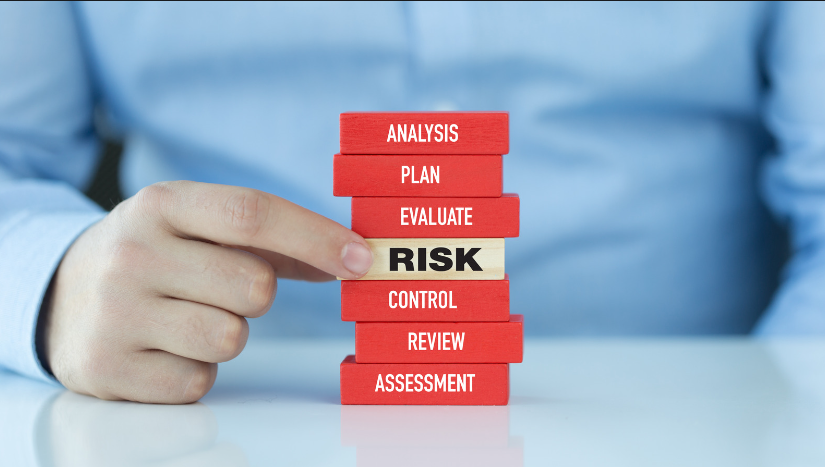At the current time, when one sends emails around as much as one breathes, keeping the emails from reaching bad guys is paramount. That is to say, every time you send an email, it’s kind of like sending a letter through the post. Now imagine someone could open your letters and read them without you knowing. That is exactly what cybercriminals would like to do with your emails. But, just like we’ve gotten better locks for our doors and better security systems for our homes, we’ve made our email protection more robust.
As we go into the 2024s, how we protect our emails will change and get even better. In this blog, we are going to follow the trends that have hit the latest picks in protecting our emails. We will explore what smart technologies are doing to help fight off cyber threats in more effective ways than ever before and what we can expect in the future.
Understanding Email Protection
An email protection system involves all the defensive means, tools, and practices that help safeguard email accounts and communications from unauthorised access, cyber threats, and malicious activities. Email protection includes a wide array of measures for ensuring the integrity, confidentiality, and availability of email information. The core components of email protection include:
- Spam Filtering: It identifies and blocks unwanted, unsolicited emails, usually containing advertisements or even malicious content from reaching a user’s inbox.
- Phishing Protection: Blocks attempts of phishing, wherein the sender pretends to be a legitimate source and tricks the user into sharing sensitive information such as login credentials or financial data.
- Malware Defence: Blocks malicious software sent in the form of email attachments or links, aimed at harming the recipient’s system or stealing sensitive data.
- Encryption: Ensures that the content of an email is encrypted during its transmission, such that it is unreadable for anyone except the intended recipient.
- Access Controls: Includes measures such as MFA and strong password policies to confirm the identity of the user and prevent unauthorised access to an account.
- Data Loss Prevention (DLP): Monitors and controls sensitive information being sent through email. DLP ensures that there is no accidental or intentional data breach.
- Advanced Threat Protection (ATP): Uses advanced technologies like AI and ML to predict and respond to threats in real-time. It identifies and mitigates complex attacks that can bypass other defences.
The Rising Complexity of Cyber Threats
- Smarter Criminals: Just as in any game of cat and mouse, the better the defenders become, the smarter the attackers get. Today’s cybercriminals use sophisticated techniques, making it harder and harder to catch them.
- Varied Tricks: From viruses that hide in attachments to phishing emails that get you to release your passwords, the tricks are many and continually changing.
- Universal Use: Almost everyone uses email, from young students to CEOs. This makes it an enormous target.
- Valuable Information: Emails often contain important information, making them a thief’s goldmine.
Evolution of Email Protection
The evolution of email protection is a tale of innovation, adaptation, and the ever-upgrading of defences against evolving threats. Let’s take a closer look at this process, breaking it down into distinct phases.
The Early Days: Simple Locks and Basic Defences
In the very early systems, email security was basically like simple locks on doors; it was a good basic start, but not terribly effective against the more skilled or determined intruder.
- Basic Passwords: Just like a physical key, these were the first lines of defence but very often, they were simple and easily guessed or cracked.
- Spam Filters: In its early days, the spam filter was much like a sieve, catching and filtering unwanted or harmful emails based on clear red flags and keywords.
They were in fact effective against the most elemental threats, but against the more sophisticated attacks, many vulnerabilities were left exposed.
Growing Smarter: Enhanced Systems and Early Warnings
Along with the threats going up in complexity, measures and mechanisms for combat also escalated accordingly. In many ways, this level represents a clear step from the early days of rudimentary defences to more complex and effective security measures.
- Encryption: To top it, encryption followed and, in a way, scrambled the content of the email so that only the sender and the recipient, both with their own “key,” could decipher it. It was just like sending a message in a locked box, not on an open postcard.
- Advanced Spam Filters: Spam filters evolved so much that they used newer criteria and algorithms to dissect spam, phishing, and malware-laden emails appropriately. This is somewhat like upgrading from a simple door lock to a security system with sensors that can detect and alert homeowners to various types of intrusions.
This was a great era in terms of attaining abilities that prevented email communication access without permission and prevented spread of malicious content.
Today’s Fortresses: AI Guards and Cutting-Edge Defense
The current state of email protection is somewhat akin to a high-tech fortress: security technology that is learning, adapting, and responding in real-time to threats.
- AI-Powered Threat Detection: Artificial Intelligence and Machine Learning help in the revolution of email security. With these technologies, it’s able to find trends and learn from the data, hence fast enough to identify new and emerging threats, most of the time even before they’ve had any chance to harm. In other words, this is a sort of ever-vigilant guard knowing all the old tricks and sometimes even anticipating and neutralising new ones.
- Real-time Monitoring: Modern email security systems monitor communications in real time, with instant analysis of emails for suspicious content, attachments, or sender behaviour. Continuous surveillance ensures that threats are not only identified but also mitigated, with minimal delay.
- Advanced Encryption Techniques: With the most sophisticated of these days’s encryption methods, whether the data is intercepted or not, it is still unreadable or secure. Such is the level of encryption to which it is akin to have an unbreakable code language known only to the sender and the receiver.
The State of Email Security in 2023
For 2023, email security was changed by advanced technology, which came in two faces—on the one hand, powered by innovations in artificial intelligence that have solidified our defences against cyber threats, and, on the other hand, have provided a toolkit for cybercriminals to attack with.
Key Cyber Threats of 2023
- AI-Powered Phishing: Phishing attempts—in which cyber criminals pretend to be legitimate entities—have now transcended being basic in complexity to sophisticated under the influence of artificial intelligence. These attacks are now harder to detect because AI powers the creation of highly convincing fake emails and websites.
- Advanced Malware: Malware in 2023 was not only more advanced in evasion techniques but smarter as well. Influenced by artificial intelligence, these malicious programs could adapt to different environments, making them more difficult to detect and remove. They could lie dormant, waiting for the right conditions or actively avoid detection by changing their behaviour to adapt against the security measures applied.
- Account Takeover (ATO) Techniques: Progress in account takeover (ATO) attacks came with the evolution in complexity of cyber attacks. By using artificial intelligence, criminals automated, in large and sophisticated scale, password guessing or generation of phishing emails. Once inside email accounts, they could carry out espionage, launch further attacks, or commit fraud.
Challenges Posed by These Threats
- Detection and Response: Emulation of attackers using AI is setting a new height for email security systems. Traditional rule-based defences do not even suffice against the dynamic nature of AI-powered threats. The challenge has been to design and deploy security solutions that can not only detect these advanced threats in real time but also predict and prevent them before they occur.
- User Education and Awareness: Since most phishing attacks are very sophisticated, user education has been gaining more ground. The usual signs of phishing emails, like poor spelling and grammar, cannot always be relied upon for a user to identify a malicious communication on his or her own.
- Account Security: The surge of ATO attacks underlines all the flaws and vulnerabilities in how users and organisations manage account security. The dependence on passwords by themselves, however, has turned out to be the weakest link in the security chain; hence, the greater need for stronger authentication and monitoring of accounts.
- Regulatory and compliance pressure: With the dynamic threat landscape, the demands of data protectionist privacy legislation grow as fast as cyber threats. Organisations are not only required to protect against cyber threats but must have their security measures compliant with new, more stringent data protection legislations.
Key Trends in Email Protection for 2024
As we look ahead to 2024, the email security landscape mutates with new technologies and strategies emerging to counter more sophisticated cyber threats. Let’s look at some of these trends that are shaping up the future of email security.
AI and Machine Learning Advancements
- Shaping Threat Detection and Response: Artificial Intelligence and Machine Learning are being used to really revolutionise how to detect and respond to email threats. Analysing huge sets of data through these technologies allows the identification of patterns that indicate a potential threat—what humans or traditional software might miss.
- Outpacing Traditional Approaches: AI security measures seem to be better than traditional methods. For instance, what usually happens with the old method is that emails are blocked if they contain certain suspicious words. An AI system, on the other hand, improves its ability to detect even the most stealthy-looking threats with each attempt.
The Rise of Account Takeover (ATO) Attacks
- How does ATO work: ATO is an attack where a cybercriminal gets improper access to an email account, usually through either stolen credentials or tricking the user into revealing a username and password. Once inside, they are used to steal data or perform further attacks.
- Professionals Fight Back: To fight ATO, professionals are running multi-factor authentication, where more than one verifier is added to an account to get in. It includes behavioural analysis with AI for monitoring account behaviour to look for suspicious activity indicative of an attack.
The Battle Against Graymail
- What is Graymail: Graymail is all about those emails that are not spam. The unwanted or less important mails: for example, newsletters or offers. It is not harmful, but graymail can clutter an inbox, making it harder to identify a true threat.
- How AI Helps in Managing Graymail: AI will help in filtering and sending less important emails to one’s trash. It is a help to users that can effectively learn which emails are not important and keep the inbox cleaner and more organised, where the important ones emerge more clearly, and the risk of a malicious email that has passed through the spam filter will not go unnoticed.
Extended Detection and Response (XDR)
- Why It Matters: XDR is much more than just email security. It integrates data from different sources, including emails and network activity, to build a holistic view of potential threats and a more capable detection and response.
- Case Study — Abnormal and CrowdStrike Combo: A perfect example of the power of XDR occurs in the perfect integration between Abnormal Security and CrowdStrike. It allows the seamless exchange of threat intelligence and analysis between platforms to build a more powerful detection and result in a more unified response to threats. It’s almost like a team of security experts from different disciplines all working together to secure your email environment.
Predictions for Email Security in 2024 and Beyond
As we navigate through the digital age, the future of email security looks both challenging and promising. With technological advancements happening at breakneck speed, here are some predictions on how email security might evolve in 2024 and beyond, focusing on the role of AI, the impact of quantum computing, and the use of predictive analytics.
AI’s Evolving Role in Cybersecurity
- Smarter Security: AI is set to become even smarter and more central to cybersecurity. Imagine AI as a superhero for your inbox, learning and adapting to new threats faster than ever before. It will not only react to threats but also predict them, staying one step ahead of cybercriminals.
- Automated Defences: AI will likely handle more security tasks on its own, automating responses to common threats. This means that if a suspicious email tries to sneak into your inbox, AI could block it automatically, without needing a human to say it’s a bad email.
The Potential Impact of Quantum Computing on Encryption and Security
- Breaking Codes: Quantum computing, with its ability to process information much faster than today’s computers, might challenge current encryption methods. Encryption is like a lock that keeps your emails safe, but quantum computing could be the master key that unlocks it effortlessly.
- Stronger Locks Needed: In response, we’ll need to develop new types of encryption that can withstand the power of quantum computing. This could lead to a race between creating unbreakable locks and finding keys to open them.
Predictive Analytics in Preempting Cyber Threats
- Seeing Into the Future: Predictive analytics uses data, statistical algorithms, and machine learning techniques to identify the likelihood of future events based on historical data. For email security, this means being able to predict and stop attacks before they happen, like having a crystal ball that tells you when and where the next cyber threat will come from.
- Customised Security Measures: With predictive analytics, email security systems could tailor defences to the specific risks facing each user or organisation. If the system knows a certain type of attack is likely, it can prepare defences in advance, making it much harder for cybercriminals to succeed.
Best Practices for Email Security in 2024
As the digital world continues to evolve, so too must our approaches to securing our email environments. Here are some best practices for ensuring your email security is top-notch in 2024.
Leveraging AI for Threat Detection
- Integrating AI Solutions: Start by incorporating AI-powered security tools into your email systems. These tools can analyse patterns and detect anomalies that might indicate a threat, acting much like a highly trained guard dog that can sniff out dangers you might not see.
- Continuous Learning and Adaptation: AI models thrive on data. The more they learn, the better they get at predicting and stopping threats. Regularly update and train your AI systems with the latest data on cyber threats to ensure they continue to provide effective protection.
Strengthening Defences Against ATO (Account Takeover)
- Multi-factor authentication (MFA): MFA one of the practices of email protection makes email accounts even safer by asking users to provide two or more verification factors in order to log in. It’s like having two locks on your door.
- Behavioral Analytics and Real-time Monitoring: Use tools that monitor account behaviour for signs of unauthorised access, such as logins from unusual locations or times. If something odd is there, the system can alert you or even lock down the account until one verifies the activity.
Managing Graymail Efficiently
- Smart Email Organization Tools: Utilise email management solutions that can sort and prioritise your emails, helping to keep important messages front and centre while moving less critical ones to the side. It’s like having a personal assistant to organise your mail.
- Educating Employees: Teach your team how to manage their inboxes effectively, including how to recognize and handle graymail. Awareness is key to ensuring that everyone follow your organisation’s email security practices.
Utilising XDR for Comprehensive Protection
- Integration into Security Frameworks: You should integrate Extended Detection and Response (XDR) into your overall security strategy. It combines various sources of security data to provide a more comprehensive view of potential threats.
- Collaboration Across Platforms: Encourage your security tools to work together by sharing information and alerts. This collaboration can lead to faster detection of threats and a more unified defence strategy.
Developing a Robust Incident Response Plan
- Key Components: Ensure your incident response plan includes clear procedures for identifying, investigating, and responding to email security incidents. It should outline roles and responsibilities, communication strategies, and recovery processes.
- Regular Review and Testing: Like any good emergency plan, you should test and review your incident response strategy regularly. This helps identify any weaknesses and ensures that everyone knows what to do in the event of a security breach.
Conclusion
Email security in 2024 demands a proactive and layered approach. By leveraging AI for threat detection, strengthening defences against ATO attacks, managing graymail efficiently, utilising XDR for comprehensive protection, and developing a robust incident response plan, organisations can significantly enhance their email security posture. Remember, in the fast-evolving landscape of cyber threats, staying informed and adaptable is key to protecting your digital communications.
Click here, to know more about Penetration Testing.









